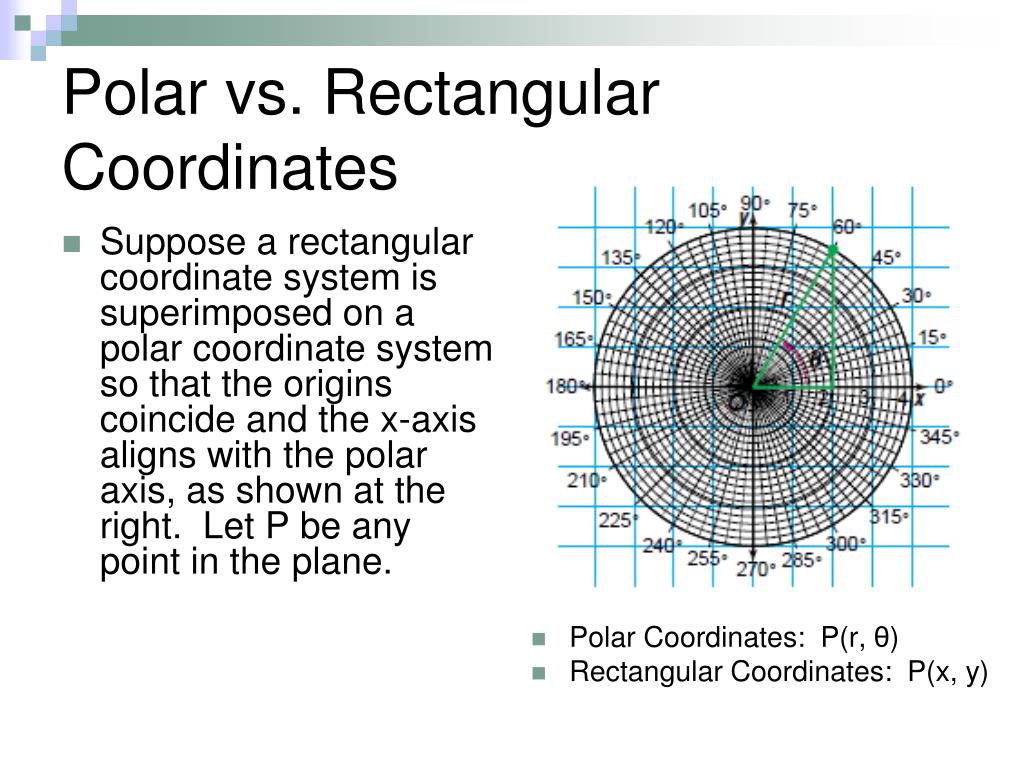

The unit vectors can be used to decompose vectors into their components in curvilinear systems. The orthogonality is also apparent from drawings showing the intersections of contours of constant coordinate values.

Observations similar to those of the preceding paragraph indicate that circular cylindrical coordinates also form an orthogonal system. The third unit vector, φ ˆ or e ˆ φ, will be perpendicular to r ˆ and θ ˆ, so our spherical polar coordinate system is orthogonal. This direction is that of an infinitesimal vector from ( r, θ, φ ) to ( r, θ + d θ, φ ), and it (and the corresponding unit vector θ ˆ or e ˆ θ) will be perpendicular to the unit vector r ˆ. The unit vector r ˆ or e ˆ r is then a vector in the “ r direction” and of unit length.Ĭontinuing with spherical polar coordinates, we now wish to consider a unit vector in the θ direction. Our definition of the “ r direction” is that of a vector from ( r, θ, φ ) to ( r + dr, θ, φ ). Because the direction associated with the change in a coordinate may depend upon the value of it (and the other coordinates), it is most useful to define the “ r direction” and other directions as those generated by infinitesimal changes in the coordinate values. However, in spherical polar coordinates the “ r direction” is surely not the same everywhere and we need to define it unambiguously. That is simple and straightforward because the “ x direction” is everywhere the same direction. In Cartesian coordinates, a unit vector e ˆ x is of unit length and in the x direction. We have used ρ (not r) as the coordinate denoting distance from the z axis we are reserving r to always mean distance from the origin and will reserve ρ for the axial distance defined here. The coordinate φ has the same definition as for spherical polar coordinates, and, just as there, it must be identified as the value of tan - 1 y / x consistent with the individual signs of x and y.

In order for coordinate sets and arbitrary spatial points to be unambiguously related, we need to restrict the range of r to 0 ≤ r < ∞, with θ in the range 0 ≤ θ ≤ π and φ within 0 ≤ φ < 2 π. Points of given φ lie on a half-plane which extends from the polar axis to infinity in the direction given by φ. Therefore, points with a given value of r lie on a sphere of radius r centered at the origin and points of given θ lie on a cone with vertex at the origin, axis in the z direction and an opening angle of rotation θ. It is customary to align the polar direction with the Cartesian coordinate z and to measure φ from a zero (our Greenwich meridian) along the + x direction, with the direction of φ such that the + y direction is at φ = π / 2 (90 °). In spherical polar coordinates, the coordinates are r, θ, φ, where r is the distance from the origin, θ is the angle from the polar direction (on the Earth, colatitude, which is 90 ° - latitude), and φ the azimuthal angle (longitude). Though the proliferation of computers has in recent years reduced the need to use exotic coordinate systems, the use of spherical polar and cylindrical coordinates remains important in physics. Before the widespread deployment of digital computers, still other coordinate systems were frequently introduced for the study of specific problems. The electrodynamics of a signal in a coaxial cable will be most easily treated in a circular cylindrical coordinate system. For example, the electric field of a point charge can be expected to take a simple form in a spherical polar coordinate system when the point charge is placed at the coordinate origin. In three dimensions, the points of constant x are planes they intersect the planes of constant y or constant z at right angles.ĭespite these obvious advantages, many problems in physics are handled advan-tageously in other coordinate systems that may reflect some symmetry of the physical system under study. Harris, in Mathematics for Physical Science and Engineering, 2014 6.3 Curvilinear Coordinate SystemsĬartesian coordinate systems have two great virtues: (1) they are uniform, with the local geometry identical at all points, and (2) they are orthogonal in two dimensions, the lines of constant x are perpendicular to the lines of constant y.


 0 kommentar(er)
0 kommentar(er)
